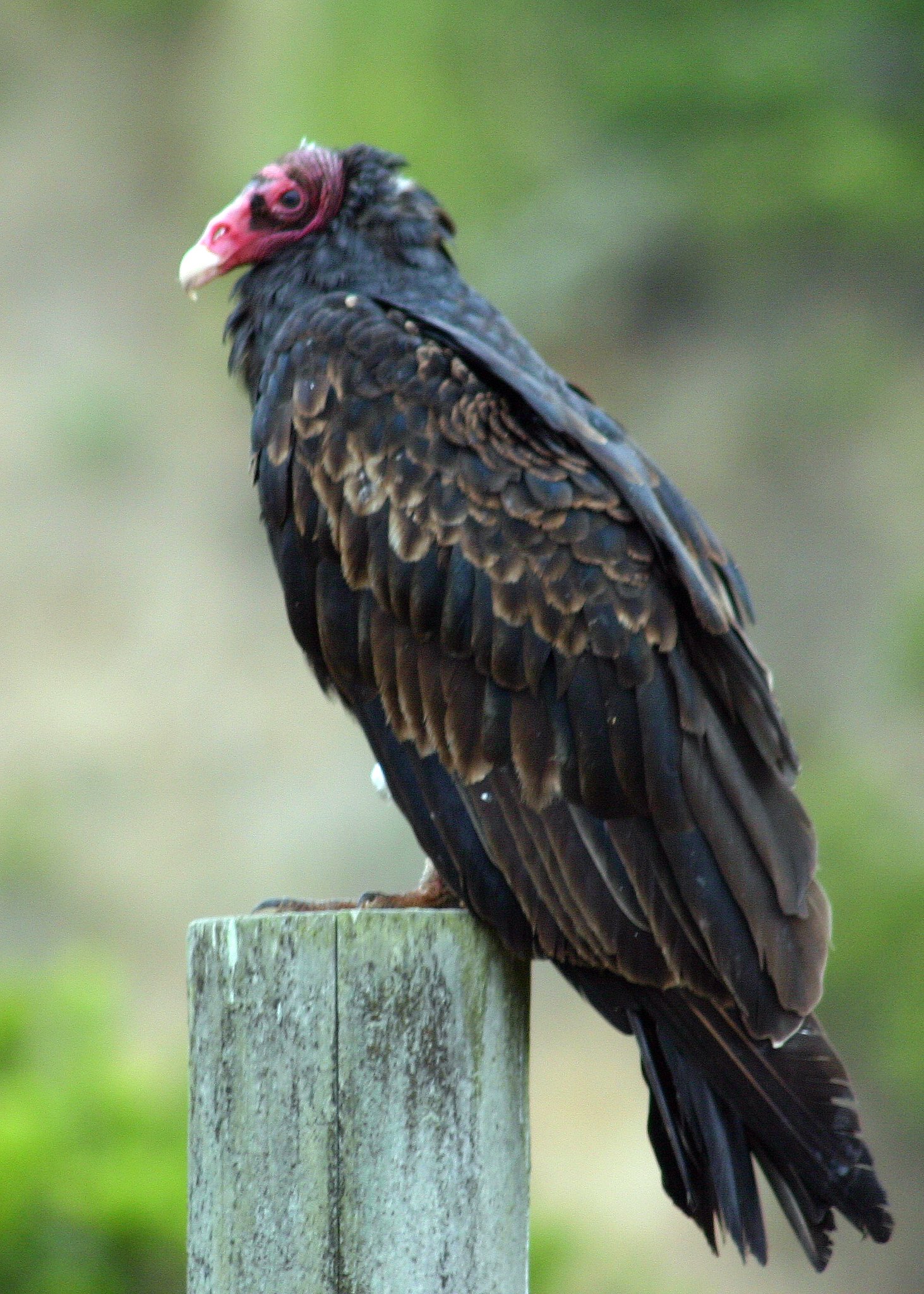A sharp sense of smell allows the turkey vulture to identify sources of prey. One of a few birds with olfactory expertise, turkey vultures can be alerted to dead flesh by as little as a few parts per trillion in the air. For this reason, black vultures, which lack a developed sense of smell, will follow turkey vultures to a carcass and harass the turkey vultures away from the prize.
In Texas, researchers at the Texas State Forensic Anthropology Research Facility are using vultures for a unique reason: to solve crimes. In a delusive field in Texas, researchers have scattered remains throughout the bluestem and mesquite of the Texas blackland prairies. Theses remains that they've scattered are human. Hoping to nail down the chronology of a crime, turkey vultures could help solidify a timeline, and this research is helping to better identify subjects as they decompose. Dirty work, but work the turkey vulture is cut out for.
The avoidance of death and dead bodies in western cultures wasn't always that way. Up to and even beyond the nineteenth century, churches and crypts in Europe were sometimes decorated with human bones, known as ossuaries, sublime art that provided a link to the dead. Linked with dead bodies, turkey vultures loiter in the land of Poe and Hollywood horror.
Yest, many cultures still revere vultures as a necessary and welcomed birds. Its scientific name (Cathartes aura) means “purifying breeze.” Throughout India and Tibet, a practice known as a sky burial commences upon death, and the turkey vultures remove the body from the earth. Interestingly, Disney's The Jungle Book movie touches on the importance of vultures in Indian culture. The four vultures sitting in the tree quipping “whatchya wanna do? I dunno what you wanna do?” end up saving Mowgli. Rewatched with my well developed “loathing” of vultures, the song “What'cha Wanna Do” becomes almost comical. The birds sing, “When you're alone/ who comes around/ to pluck you up/ when you are down.” These are the precise habits of a turkey vulture, but they are seen as friends in this bildungsroman.
Different species of vultures are found throughout the world. The Turkey Vulture and Black Vulture are known as New World vultures. Yet none of the old world vultures are even found in the same family as turkey vultures. This suggests a convergent evolution for the role of scavengers in the sky, high soaring birds with bald heads. These bald heads are another reason to admonish the turkey vulture, yet these too serve a purpose. Its pink head keeps it clean as it scavenges and helps prevent disease. A bird with a fully feathered head poking around in carcasses wouldn't be the cleanest and must have been selected against.
On the east coast, turkey and black vultures have become a bit of a problem. Suburbanization tends to favor these birds, as more roads mean more roadkill (to a point) and more landfills. The vultures have been nesting in suburban neighborhoods where their excrement runs down trees and splatters rooftops. A black mass of hundreds of vultures probably violates the suburban aesthetic. As a result he USDA's Animal and Plant Health Inspection Service (APHIS) has harassed tens of thousands of vultures in suburban areas. It is speculated that the black vultures are moving north, partly due to climate change. A warming climate means that the line where carcasses used to freeze is headed north. Along this line, the vultures tip their wings as they pass the growing human populations along the coast. Tipping their wing, thankful for the landfills and the roadkill .
In Wisconsin, turkey vultures often nest on cliffs or concrete structures, secluded from human populations. But about 9 am daily, the vultures soar high above the glacial plains, perhaps seeking an urban heat island, looking for a thermal. Driving on I-94 to the east, past Johnson Creek, I see about 50 vultures hovering over a landfill. Gorging themselves on the offal of our society, turkey vultures are doing alright.
Written by Drew Harry, Faville Grove Land Steward
Photo by David A. Hoffman, Flickr Creative Commons











